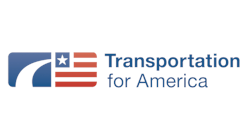Members of Congress have spent the last six weeks negotiating a transportation bill in conference committee, trying to beat the clock on the current extension set to expire June 30. As part of those negotiations, some members are attempting to strip the bill of key policies that would create safer streets for pedestrians. With more than 50,000 pedestrians killed between 2001 and 2010, Transportation for America is today releasing new data presenting a breakdown of fatalities by Congressional district.
“We implore House members of the conference committee to remember their constituents who have died as a result of dangerous conditions on their roadways that could be fixed with the very modest investment proposed in the Senate bill,” said James Corless, director of Transportation for America. Corless urged Congress to preserve the small program in the Senate’s MAP-21 bill known as “Additional Activities” which is targeted to safety and revitalization projects and allows local communities a stronger say in what gets built. The program consolidates and revamps a number of existing programs like Transportation Enhancements and Safe Routes to School and provides more local access to the funds.
Among conference committee members with high pedestrian deaths between 2001 and 2010 are Eddie Bernice Johnson (TX-30) with 289, Corrine Brown (FL-03) with 274, Jerrold Nadler (NY-08) with 195, Steve Southerland (FL-02) with 164, Ralph Hall (TX-04) with 127, Rob Bishop (UT-01) with 109, James Lankford (OK-05) with 118, and Fred Upton (MI-06) with 83.
“Our analysis has found that many of the most dangerous roads in the country were built either with federal dollars or under federal guidelines,” said Corless. “Having saddled communities with unsafe streets, it would be the height of cruelty for Congress now to take away resources and latitude from local communities trying to improve those conditions and save lives.”
The majority of deaths occur on roadways that encourage speeding but do not provide the sidewalks, crosswalks, signals and other protections for pedestrians, particularly seniors and children. Americans 65 and older are 65 percent more likely to be killed as pedestrians than the population as a whole, national statistics show.
“As this data makes clear, all across the country Americans are aging in places where a walk to a bus stop or the store is fraught with danger, because there are few safe places to cross busy roads and little protection from fast-moving traffic,” said Joyce Rogers, Senior Vice President of AARP Government Affairs. “With a rapidly aging population, AARP is urging Congress not to ignore the dramatic consequences inaction on pedestrian safety could have on Americans of all ages and ability.”
The full list of all districts and their pedestrian fatalities can be found here, on the T4America website.
“At the very moment that Congress began debating whether or not to preserve programs like Safe Routes to School and others designed to make walking and biking safer, the CDC reported that almost 32 percent of 2- to 19-year-olds and nearly 69 percent of adults in America are overweight or obese,” said Susan Polan of the American Public Health Association. “Considering the incredible levels of obesity in America, why wouldn’t we prioritize the very strategies that can reduce the obesity rate and increase opportunities to incorporate physical activity safely into our daily lives — whether that’s trails for runners, bike lanes for commuters or sidewalks for a stroll to the store?”
“Biking and walking reduce health care costs by preventing weight gain and keeping hearts healthy” said Robert M. Pestronk, executive director of the National Association of County and City Health Officials. “Local health departments keep people in their communities healthy and safe. Encouraging communities to assure safer routes for biking and walking prevents pedestrian deaths, which occur every 2 hours, and pedestrian injuries, which happen every 8 minutes.”
The Transportation for America coalition is urging the conference committee to pass a transportation bill that incorporates pedestrian safety provisions passed in the Senate’s bipartisan MAP-21 bill. While House negotiators are pushing to eliminate the small programs that fund projects like Safe Routes to School to help prevent deaths and injuries on our roadways, the Senate bill includes funding to fix dangerous road conditions. This funding is included in the Additional Activities program, which arose from a bipartisan agreement to reform the Transportation Enhancements program to narrow the eligibility, provide greater local control and let states redirect the money when there are no eligible local projects.



